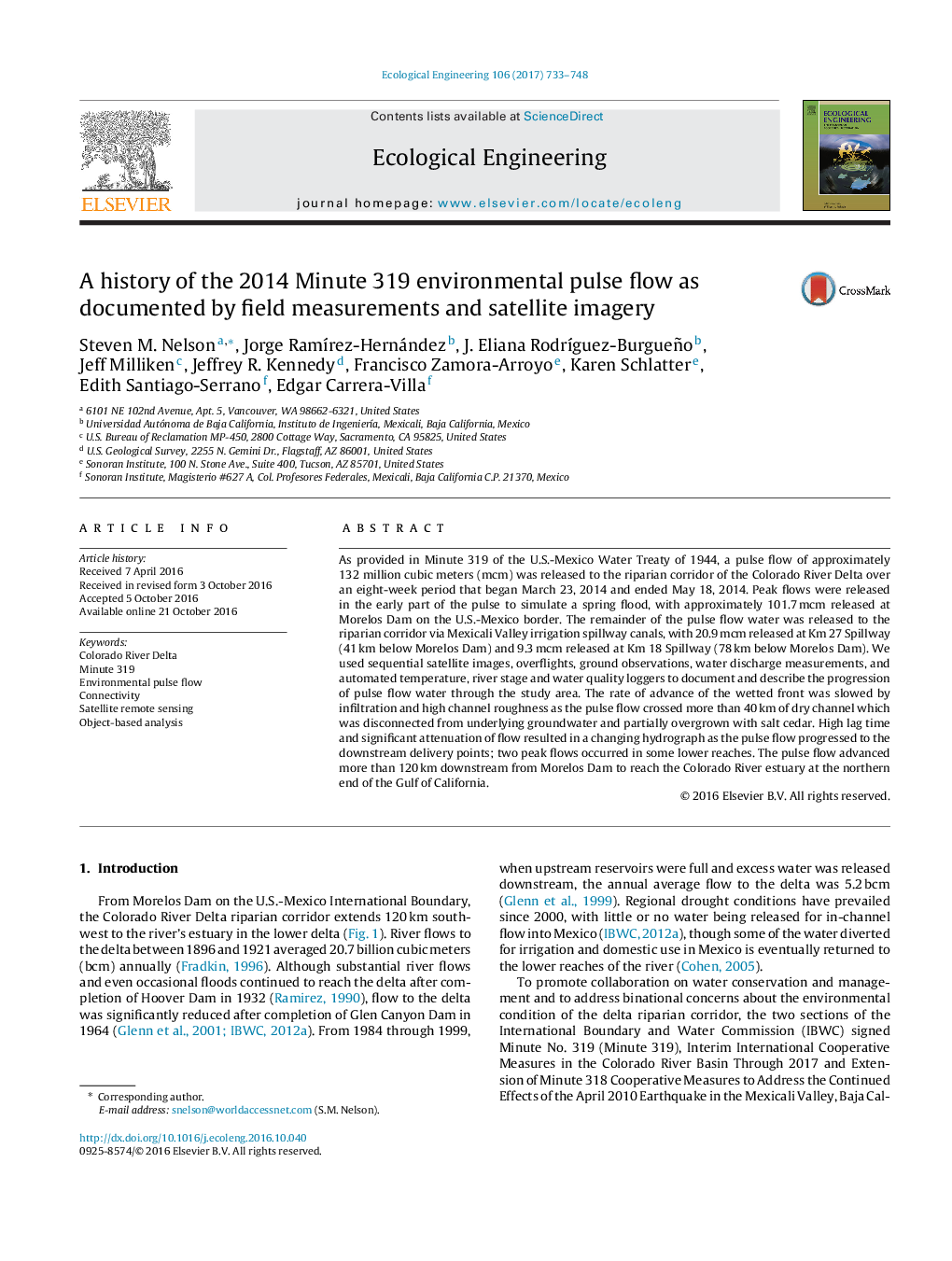| Article ID | Journal | Published Year | Pages | File Type |
|---|---|---|---|---|
| 5743694 | Ecological Engineering | 2017 | 16 Pages |
As provided in Minute 319 of the U.S.-Mexico Water Treaty of 1944, a pulse flow of approximately 132 million cubic meters (mcm) was released to the riparian corridor of the Colorado River Delta over an eight-week period that began March 23, 2014 and ended May 18, 2014. Peak flows were released in the early part of the pulse to simulate a spring flood, with approximately 101.7Â mcm released at Morelos Dam on the U.S.-Mexico border. The remainder of the pulse flow water was released to the riparian corridor via Mexicali Valley irrigation spillway canals, with 20.9Â mcm released at Km 27 Spillway (41Â km below Morelos Dam) and 9.3Â mcm released at Km 18 Spillway (78Â km below Morelos Dam). We used sequential satellite images, overflights, ground observations, water discharge measurements, and automated temperature, river stage and water quality loggers to document and describe the progression of pulse flow water through the study area. The rate of advance of the wetted front was slowed by infiltration and high channel roughness as the pulse flow crossed more than 40Â km of dry channel which was disconnected from underlying groundwater and partially overgrown with salt cedar. High lag time and significant attenuation of flow resulted in a changing hydrograph as the pulse flow progressed to the downstream delivery points; two peak flows occurred in some lower reaches. The pulse flow advanced more than 120Â km downstream from Morelos Dam to reach the Colorado River estuary at the northern end of the Gulf of California.
